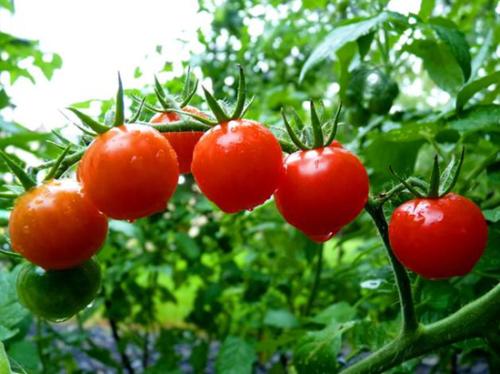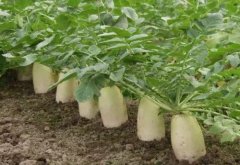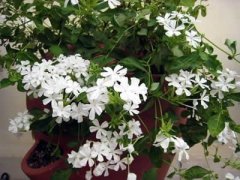Tomato planting technology and management, how to plant tomatoes to grow better results
Tomatoes originated in the Andes in South America, which is now part of Peru, Bolivia and Ecuador. Eventually tomatoes were grown throughout Central America and Mexico, and Spanish explorers found them in the gardens of Montezuma in the 16th century. How can tomatoes grow well?
Tomato planting technology and management:
Tomatoes should be 30 to 48 inches apart in rows and 48 inches apart in rows. It's tempting to put them closer when sowing, but if you put them too close, you will only increase the risk of getting sick. Wrap the stem in a piece of cardboard or wax paper, which extends an inch above and below the soil to protect them from ground tigers. You can use a regular office stapler to fix the material in a circle. After the stem hardens within 3-4 weeks, the damage caused by the ground tiger will no longer be a problem, and the paper will rot away.
When transplanting, use tomato food of 1 stroke 3 concentration dissolved in water as the starting solution (one pint per plant). Then use the recommended granules regularly throughout the growing season. Once the fruit is over, tomatoes need a lot of fertility, but too much early in the season will cause large plants to grow, but the number of tomatoes will decrease. It is also a popular technique to use slow-release fertilizer particles when planting. In order to reduce the impact of transplantation, Wall Orange 39; water plant protectant was used when planting. These devices will protect plants from late frost and wind drying. After the plants grow so big that the walls are covered with water protectors, the fibers are arranged around the tomato cages, which will continue to protect the plants from the wind and help keep early insect invaders away like aphids.
Tomatoes even need to be watered to prevent blossom and fruit rot. Water thoroughly, but not too often (twice a week should be enough), and try watering early in the day so that the plants dry before the evening. This helps to reduce disease problems. Drip irrigation or soaking hose irrigation is the best idea. By using water more efficiently in this way, the leaves will not get wet.
Mulching can help ensure that the factory has a uniform water supply. Try to put a layer of 5-10 sheets of newspaper between the lines (first soak the paper in water so they don't blow away) and then cover the newspaper with hay clippings, bark mulch, etc. Some weeds will eventually pass, but in any case the tomato will be finished by that time. In addition, the paper will rot in the autumn, so it can be filled to produce more organic matter. The new cover this year is Burpee's Red Mulch. It is a reflective material that, like black plastic, warms the soil at the beginning of the season and increases the yield of high-quality early-maturing tomatoes.

- Prev

How to plant direct seeding seeds? Radish seed planting method when is the seed direct seeding
How to grow direct seeding plants has the same basic needs as all vegetables: full sunlight (8 hours a day); rich in well-drained soil, you can dig up a lot of organic matter, such as compost; the right amount of nutrients from compost and fertilizer; and water. According to
- Next

How to breed potted snow flowers, when to sow snow flower seeds
White snowflake is an ornamental flower, but generally few people plant this kind of plant, but not this kind of plant is not easy to raise, but appreciate it very few people, then do you want to plant this kind of plant? If you want to, then let's take a look together! potted snow flower
Related
- A course of planting techniques and methods on how to grow carrots
- How to plant the latest tulips?
- Is it better to pick tea in the morning or in the afternoon? When is the best time for tea to be picked? what is the third or fifth tea?
- Launch Yuanxiao Happy combination Haocha + Tea Yuan healthy Taste
- Penghu Tourism "Fireworks 20 Parade with You"
- 2022 West Lake Happiness holds "Digital Revitalization Voucher" and draws iphone13 and laptop.
- Banqiao Fuzhou social houses are designed to change start-up combined with police elimination to create a safe and livable environment
- The convenient measure of "mechanical weeding" in Xinbei has been abused and the Agriculture Bureau has imposed heavy penalties on the illegal land consolidation.
- Changgeng University Joins Hands with Four Memory Factories to Rescue Memory Talent Shortage
- The list of Taiwan's top 100 MVP managers is listed by the Director-General of the Farmers' Association of Sanxia District.

